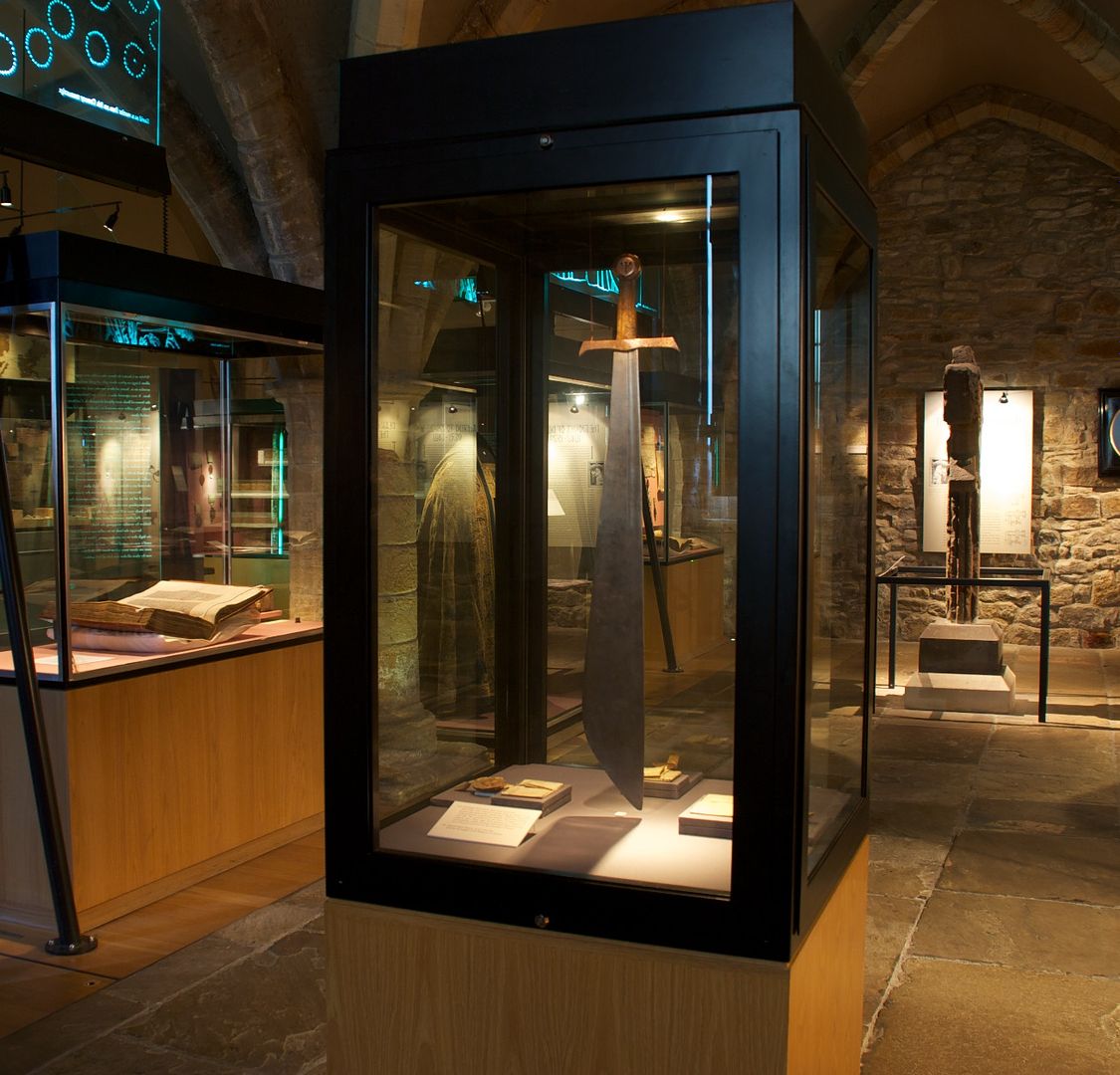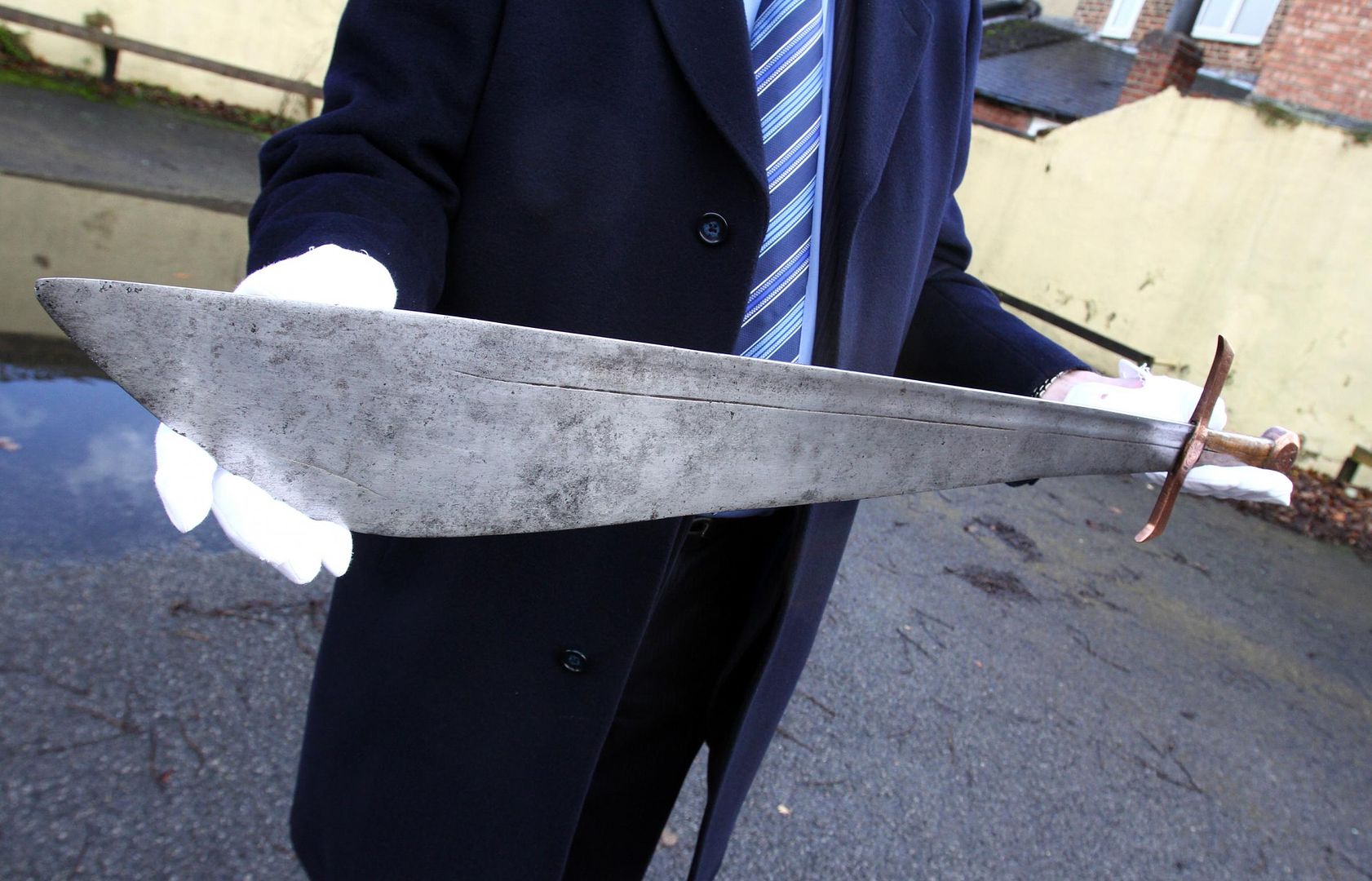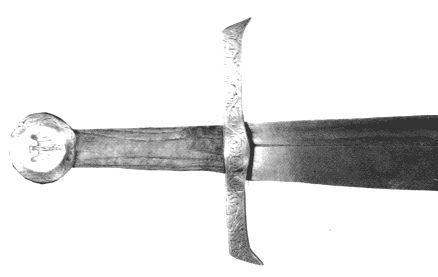The Conyers Falchion
Sept 7, 2013 7:35:05 GMT
Post by Jack Loomes on Sept 7, 2013 7:35:05 GMT






The overall length is 890 mm (35.04"). It weighs 1300 gram (2.86 lbs.)
The handsome hilt consists of three parts: pommel, grip and cross. The beveled wheel pommel is made of bronze, featuring heraldic arms on both sides. It has a diameter of 42 mm (1.65") and a thickness of 20 mm (0.79"). On the outward-facing side (assuming the falchion is held in the right hand), there's a black eagle with spread wings, while on the other side the three lions of England are found. The 95 mm (3.74") wooden grip is made from ash. Like the pommel, the 168 mm (6.6") wide cross is also made of bronze. It is decorated with dragon motifs and is slightly asymmetrical.
There's a legend surrounding the Conyers falchion, where the sword is said to have been wielded by Sir John Conyers when he slew the Sockburn Worm in 1063. The Conyers family probably came from France to England around the time of the Norman Conquest (1066 and all that). They were granted the manor Sockburn-on-Tees (formerly known as Storkburn) in County Durham in the 12th century, according to the legend because of Sir John's slaying of the dragon.
The Sockburn Worm itself was almost certainly immortalized by Lewis Carroll in his famous nonsense rhyme, "Jabberwocky", as he lived in Croft on Tees as a boy and it was there he wrote the first verse of the rhyme. There's a theory that the legend has its roots in the slaying of some marauding Viking chieftain, who made their raids using dragon-headed longships.
Source: www.foxtail.nu/bjorn/h_conyers_eng.htm

.png?width=1920&height=1080&fit=bounds)